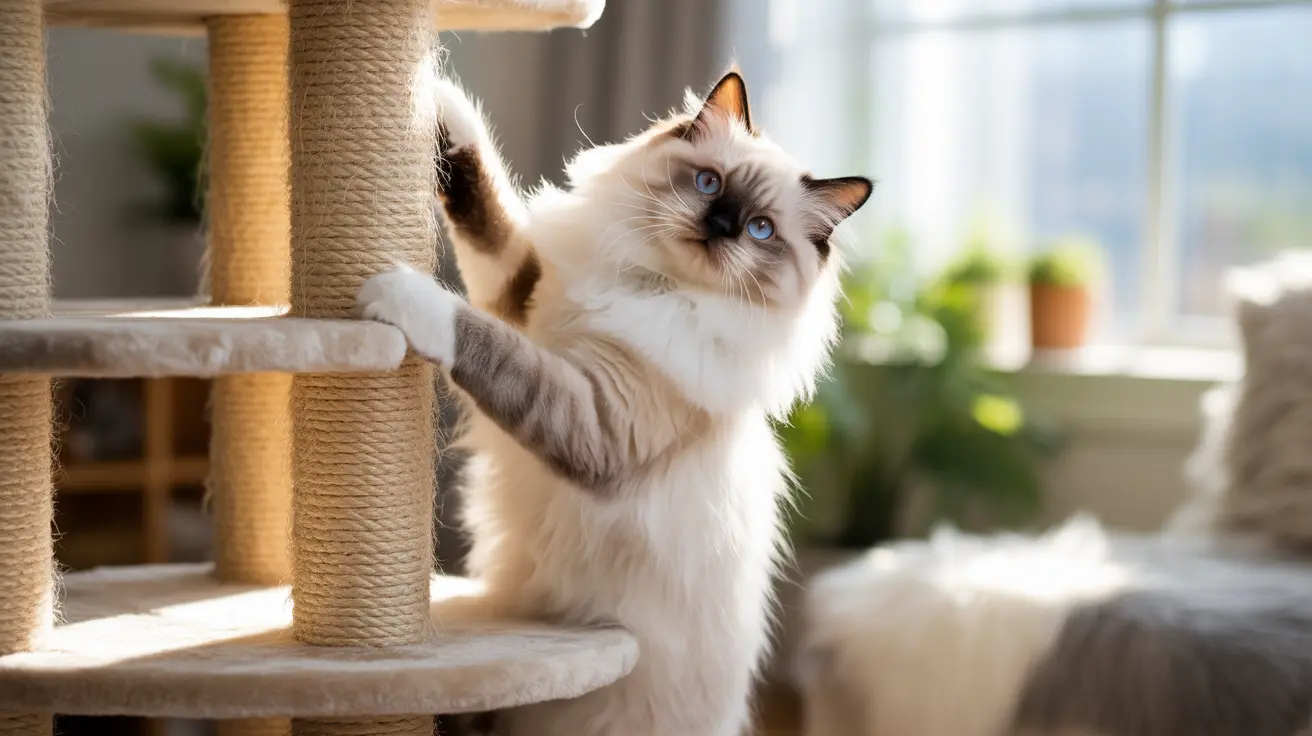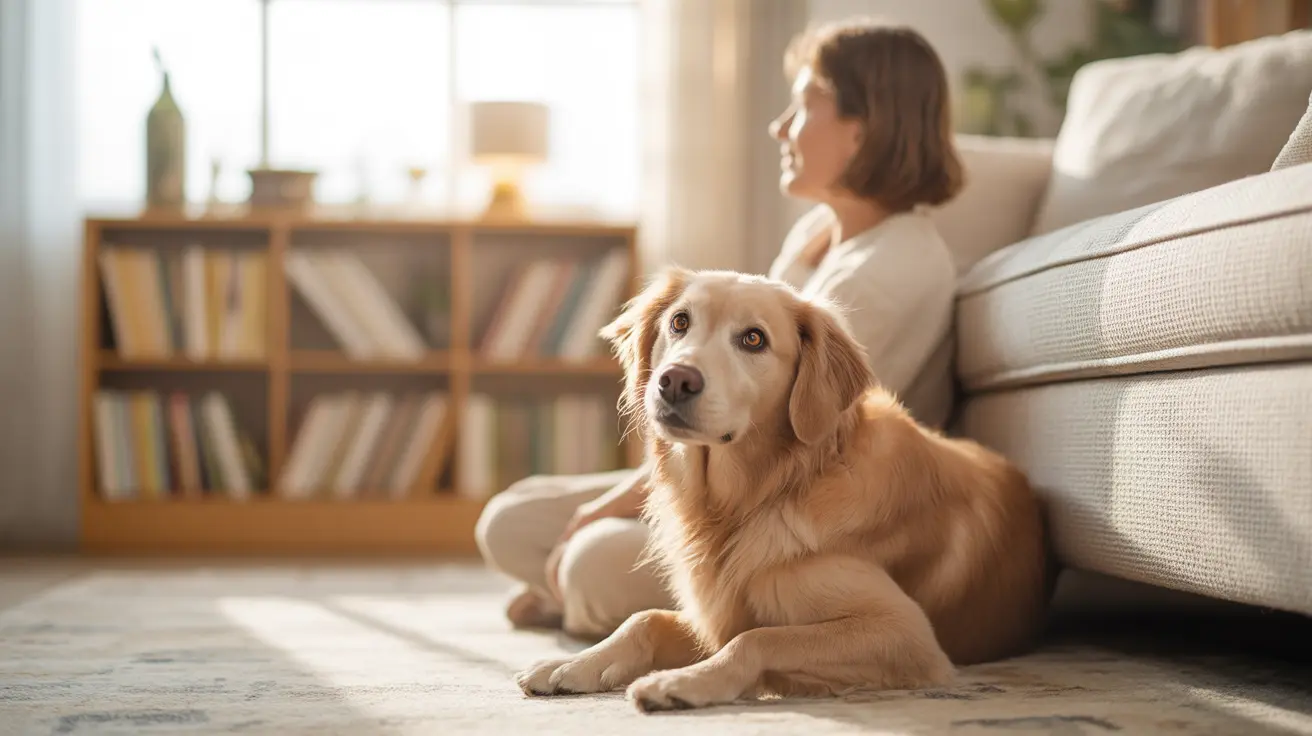Essential Features of Cat Trees for Scratching and Climbing: Your Complete Guide
Creating a feline-friendly environment in your home goes far beyond providing food, water, and a litter box. Cats have innate behavioral needs that require specific environmental resources to thrive, and one of the most important investments you can make for your cat's wellbeing is a properly designed cat tree. These vertical structures serve as multi-functional furniture that addresses your cat's natural instincts for scratching, climbing, and perching while protecting your household furniture from unwanted claw damage.
Understanding the essential features of cat trees for scratching and climbing is crucial for every cat owner who wants to provide their pet with an enriching indoor environment. The right cat tree doesn't just occupy space in your home—it becomes a vital resource that supports your cat's physical health, mental stimulation, and emotional security. From the materials used in construction to the strategic placement within your living space, every aspect of your cat tree selection can significantly impact how well it serves your feline companion's needs.
This comprehensive guide will walk you through the critical features that make cat trees truly effective for scratching and climbing, helping you make an informed decision that benefits both you and your cat. Whether you're a first-time cat owner or looking to upgrade your current setup, understanding these essential characteristics will ensure your investment enhances your cat's quality of life while preserving your furniture.
Safety and Stability: The Foundation of Effective Cat Trees
The most critical aspect of any cat tree is its ability to provide a safe and secure environment for your cat's activities. A well-designed cat tree must withstand the dynamic forces created when cats jump, climb, and scratch, making stability the cornerstone of effective cat furniture design.
The tower should be engineered to support the weight of your cat without being top-heavy, which could cause dangerous tipping during use. Large cats over 10 pounds require cat trees with wider, heavier bases and larger platforms specifically designed to accommodate their size and prevent instability. The base should be sufficiently wide and weighted to counterbalance the height of the structure, ensuring that even vigorous scratching sessions won't compromise the tree's stability.
Safety considerations extend beyond just weight capacity. A quality cat tree should contain no small parts that cats can chew or potentially choke on, and all construction materials should feature non-toxic finishes. Well-reviewed products from reputable manufacturers typically undergo stability testing to ensure they can handle the combined weight and activity levels of multiple cats, making customer feedback an invaluable resource when evaluating safety standards.
Optimal Height and Platform Configuration
Height plays a crucial role in satisfying cats' natural behavioral needs, as these animals have an instinctive drive to seek elevated positions for safety and territorial advantage. Cat trees replicate the natural climbing spaces that cats would utilize in outdoor environments, helping them feel secure while fulfilling their climbing instincts safely indoors.
The height of your cat tree should complement both your cat's natural instincts and your available living space. Cats love high places because elevation provides them with a sense of security and control over their environment, allowing them to observe their surroundings while maintaining escape routes if needed. However, the spacing between platforms is equally important and should be tailored to your cat's current jumping ability and age-related needs.
Platform Spacing Guidelines by Life Stage
Different life stages require different platform configurations to ensure safe and comfortable use. Kitten trees should feature closer platform spacing of 12-16 inches with rounded edges and washable materials, positioning scratching surfaces at kitten height to encourage the development of healthy scratching habits from an early age.
Adult cat trees require proper platform spacing of 18-24 inches and sturdy construction capable of supporting even heavier cats. Multiple perches at varying heights help reduce territorial disputes in multi-cat households while providing options for cats with different activity preferences.
Senior cat trees should prioritize comfort and accessibility with smaller platform spacing of 8-12 inches, orthopedic cushioning, non-slip surfaces, ramps, and multiple entry and exit points to accommodate reduced mobility while maintaining access to elevated spaces.
Scratching Surface Materials and Positioning
The effectiveness of a cat tree for scratching depends heavily on both the materials used and their strategic positioning throughout the structure. Cats have individual preferences for scratching textures, and understanding these preferences is crucial for selecting a tree that will actually be used rather than ignored in favor of your furniture.
Popular scratching materials include corrugated cardboard, jute, seagrass, and sisal rope, each offering different textures and resistance levels that appeal to various cats. It's beneficial to identify which texture your cat prefers before investing in a cat tree, as this preference will largely determine whether they embrace or reject the new furniture.
Consider whether your cat prefers to scratch horizontally or vertically when choosing a cat tree design. Some cats enjoy stretching upward while scratching, requiring vertical surfaces positioned at appropriate heights, while others prefer horizontal scratching surfaces that allow them to scratch while in different body positions.
The lowest scratching post should be positioned at least 80 centimeters tall to allow cats to stretch fully while clawing, as this stretching behavior is an important part of their natural scratching routine that helps maintain muscle tone and flexibility after periods of rest.
Strategic Variety of Features for Comprehensive Use
An effective cat tree should offer a variety of features that address different aspects of feline behavior and preferences. Look for designs that include places to curl up, scratch, hide, play with toys, and nap at different heights, creating a comprehensive environment that serves multiple purposes throughout your cat's daily routine.
Consider cubbies and enclosed spaces if your cat enjoys hiding, as these features provide security and privacy while maintaining access to elevated positions. Cats prefer to feel hidden and safe while having clear escape routes, so the design should balance privacy with accessibility.
High vantage points satisfy cats' natural desire to climb and observe their environment from elevated positions. However, these observation posts should be complemented by comfortable resting areas that encourage extended use of the tree rather than just brief climbing sessions.
Covering platforms with faux fur or soft surfaces provides comfort for sleeping cats and makes the tree more appealing for extended rest periods. Interactive features and toy attachments can provide additional mental stimulation, though these should be securely attached and made from safe materials.
Optimal Placement for Maximum Usage
Even the most well-designed cat tree will be underutilized if placed incorrectly within your home. Location plays a crucial role in determining whether your cat will embrace their new furniture or continue to ignore it in favor of less appropriate alternatives.
Place the cat tree against a wall near a window whenever possible, as this positioning allows cats to feel safe with something solid behind them while providing opportunities to observe birds or outdoor activity. This placement satisfies both their security needs and their natural curiosity about environmental changes and movement.
The cat tree should be located in a quiet but frequently used area, ideally positioned along the route between feeding and sleeping areas to encourage regular interaction. Cats are more likely to use furniture that's integrated into their natural traffic patterns rather than isolated in unused corners of the home.
Avoid placing cat trees in high-traffic areas where they might feel vulnerable or stressed, but ensure they're accessible enough to become part of your cat's daily routine. The goal is to create an inviting space that feels safe and convenient rather than exposed or inconvenient.
Size Considerations for Different Household Compositions
The size and configuration of your cat tree should reflect the specific needs of your household composition, taking into account the number of cats, their individual sizes, and their activity levels. Multi-cat households particularly benefit from varied platform sizes to accommodate differences in activity preferences and body sizes.
Large cats over 10 pounds require specially designed trees with wider platforms and heavier bases to prevent tipping during use. The increased surface area and weight capacity ensure that larger cats can use all features of the tree safely and comfortably without compromising stability.
Having more than one cat tree is beneficial, especially in multi-cat households, as this reduces competition for resources like climbing, scratching, and resting spots. Multiple trees allow each cat to have their preferred spaces while reducing territorial conflicts that might discourage use.
Consider modular cat furniture that can adapt as your cats age or as your household composition changes. These flexible systems allow you to modify height, add or remove features, and adjust the configuration to meet evolving needs without requiring complete replacement.
Material Quality and Durability Factors
High-quality materials significantly impact the longevity and effectiveness of cat trees, especially in households with multiple cats or particularly active individuals. Durable construction materials ensure that the tree maintains its structural integrity and appeal over time, protecting your investment while continuously meeting your cats' needs.
The choice of scratching materials affects both durability and cat satisfaction. Different cats prefer different textures, so understanding your cat's preferences before purchase can prevent the disappointment of investing in a tree that goes unused. Some materials withstand heavy use better than others, making durability an important consideration for active cats or multi-cat households.
Regular maintenance, including cleaning, replacing worn parts, and rotating toys, can extend your cat tree's useful life and maintain its appeal to your cats. Well-constructed trees often feature replaceable components that allow you to refresh specific elements without replacing the entire structure.
Training and Behavioral Considerations
Simply providing a cat tree doesn't automatically redirect scratching behavior away from furniture. Successful integration requires understanding that not all cats scratch furniture by default, and a suitable cat tree must meet each cat's individual needs and preferences regarding material, structure, and location to be effective.
Positive reinforcement and careful training techniques are necessary to encourage proper use of the cat tree. This process involves making the tree more appealing than alternative scratching surfaces while gradually discouraging inappropriate scratching behaviors through consistent, patient training methods.
Contrary to popular belief, using catnip, valerian, or pheromone sprays on cat trees often fails to encourage scratching and can sometimes produce negative effects. These attractants may create temporary interest but don't address the underlying preferences and needs that drive scratching behavior, making proper tree selection and placement more important than artificial attractants.
Space-Saving Solutions for Compact Living
Cat owners in smaller living spaces don't have to compromise on providing vertical enrichment for their pets. Space-saving options like over-the-door cat condos or window perches offer alternatives that provide climbing and perching opportunities without occupying significant floor space.
Compact and foldaway cat trees are designed specifically for tight spaces while still offering essential features like scratching surfaces and elevated rest areas. These designs often incorporate wall-mounting systems or multi-functional furniture that serves both human and feline needs.
Window perches and wall-mounted climbing systems can supplement or replace traditional cat trees in space-constrained environments while still providing the vertical access and environmental enrichment that cats require for optimal wellbeing.
Style and Aesthetic Integration
Modern cat tree designs recognize that pet furniture should complement rather than clash with home decor. Choosing a cat tree that harmonizes with your interior design ensures that the furniture enhances rather than detracts from your living space aesthetic.
Cat trees come in various styles, including standard, modern, compact, foldaway, and uniquely designed towers to fit different spaces and aesthetic preferences. Contemporary designs often feature cleaner lines, neutral colors, and materials that coordinate with modern home furnishing trends.
The integration of cat furniture into home design reflects the growing recognition that pet accessories can be both functional and attractive, supporting the human-animal bond while maintaining attractive living spaces.
Frequently Asked Questions
- What height should a cat tree be for optimal use?
The ideal height depends on your cat's age and mobility, but cats naturally prefer elevated positions for security and territorial advantage. Adult cats benefit from platforms spaced 18-24 inches apart, while kittens need closer spacing of 12-16 inches, and senior cats require smaller gaps of 8-12 inches for safe access.
- How do I choose between different scratching materials?
Cats have individual preferences for scratching textures including corrugated cardboard, jute, seagrass, and sisal rope. Observe which textures your cat currently uses or seems drawn to, and consider whether they prefer horizontal or vertical scratching positions when selecting materials and tree design.
- Where is the best location to place a cat tree in my home?
Position the cat tree against a wall near a window in a quiet but frequently used area, ideally along the route between feeding and sleeping areas. This placement provides security with something solid behind them while offering environmental stimulation through window observation.
- Will a cat tree automatically stop my cat from scratching furniture?
Simply providing a cat tree won't automatically redirect scratching behavior. The tree must meet your cat's individual needs regarding material, structure, and location, and successful integration typically requires positive reinforcement and patient training techniques rather than relying solely on the tree's presence.
- What features are most important for multi-cat households?
Multi-cat households benefit from varied platform sizes, multiple entry and exit points, and ideally more than one cat tree to reduce competition for resources. The tree should accommodate different activity levels and body sizes while providing sufficient space to prevent territorial disputes over climbing and resting spots.
- How do I know if my cat tree is stable enough?
A stable cat tree should have a wide, heavy base that prevents tipping, especially important for cats over 10 pounds. Test the stability by gently pushing the tree from different angles, and ensure it can support your cat's weight during active use without wobbling or showing signs of instability.
- Are there alternatives for small living spaces?
Space-saving options include over-the-door cat condos, window perches, wall-mounted climbing systems, compact foldaway trees, and multi-functional furniture that serves both human and feline needs while providing essential vertical access and scratching opportunities.
Conclusion
Selecting the right cat tree with essential features for scratching and climbing requires careful consideration of your cat's individual needs, your living space constraints, and the quality of construction materials. The most effective cat trees combine stability and safety with appropriate height, varied features, and strategic placement to create an environment that truly serves your cat's natural behavioral needs. Remember that success depends not just on the tree itself, but on understanding your cat's preferences and providing proper encouragement for use.
By focusing on these essential features—from sturdy construction and appropriate scratching materials to optimal placement and size considerations—you can invest in a cat tree that enhances your pet's quality of life while protecting your furniture. The goal is to create a comprehensive vertical environment that satisfies your cat's instincts for climbing, scratching, and observing their territory, ultimately contributing to a happier, healthier, and more behaviorally satisfied feline companion.






